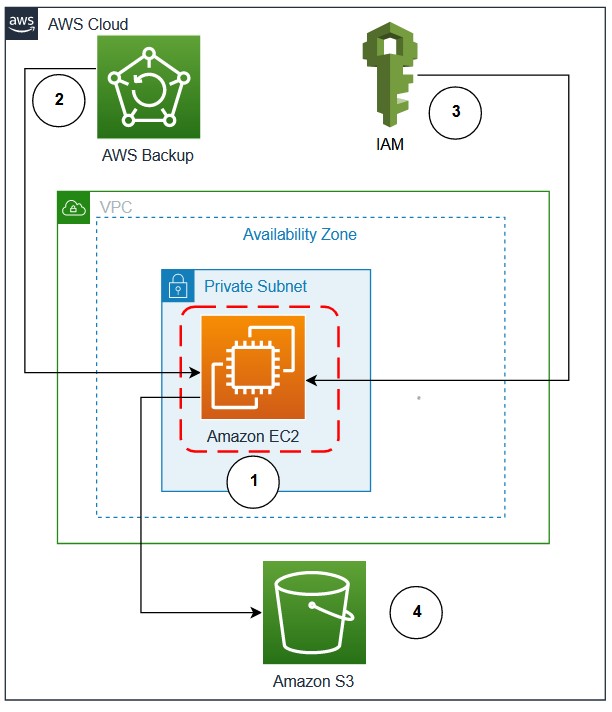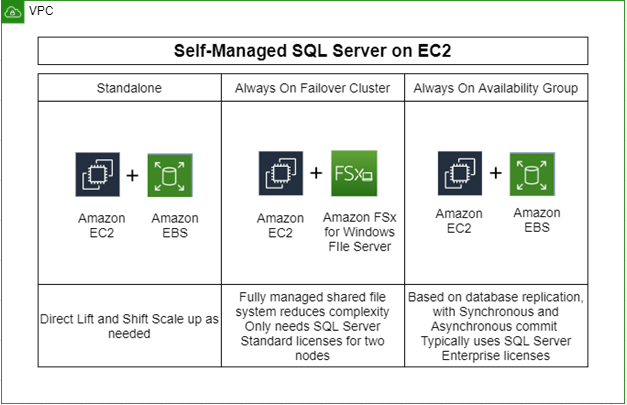AWS Architecture Blog
Category: Amazon Elastic Block Store (Amazon EBS)
AWS Cloud service considerations when modernizing account-per-tenant solutions
An increasing number of software as a service (SaaS) providers are modernizing their architectures to utilize resources more efficiently and reduce operational costs. There are multiple strategies that can be used when refining your multi-tenant architecture. This blog will look at a specific scenario where SaaS providers move from an account-per-tenant to an Amazon Elastic […]
Let’s Architect! Optimizing the cost of your architecture
Written in collaboration with Ben Moses, AWS Senior Solutions Architect, and Michael Holtby, AWS Senior Manager Solutions Architecture Designing an architecture is not a simple task. There are many dimensions and characteristics of a solution to consider, such as the availability, performance, or resilience. In this Let’s Architect!, we explore cost optimization and ideas on […]
Deploying IBM Cloud Pak for integration on Red Hat OpenShift Service on AWS
Customers across many industries use IBM integration software, such as IBM MQ, DataPower, API Connect, and App Connect, as the backbone that integrates and orchestrates their business-critical workloads. These customers often tell Amazon Web Services (AWS), they want to migrate their applications to AWS Cloud, as part of their business strategy: to lower costs, gain […]
Using AWS Backup and Oracle RMAN for backup/restore of Oracle databases on Amazon EC2: Part 1
Customers running Oracle databases on Amazon Elastic Compute Cloud (Amazon EC2) often take database and schema backups using Oracle native tools, like Data Pump and Recovery Manager (RMAN), to satisfy data protection, disaster recovery (DR), and compliance requirements. A priority is to reduce backup time as the data grows exponentially and recover sooner in case […]
Identification of replication bottlenecks when using AWS Application Migration Service
Enterprises frequently begin their journey by re-hosting (lift-and-shift) their on-premises workloads into AWS and running Amazon Elastic Compute Cloud (Amazon EC2) instances. A simpler way to re-host is by using AWS Application Migration Service (Application Migration Service), a cloud-native migration service. To streamline and expedite migrations, automate reusable migration patterns that work for a wide […]
Multi-Region Migration using AWS Application Migration Service
AWS customers are in various stages of their cloud journey. Frequently, enterprises begin that journey by rehosting (lift-and-shift migrating) their on-premises workloads into AWS, and running Amazon Elastic Compute Cloud (Amazon EC2) instances. You can rehost using AWS Application Migration Service (MGN), a cloud-native migration tool. You may need to relocate instances and workloads to […]
Creating a Multi-Region Application with AWS Services – Part 1, Compute, Networking, and Security
Many AWS services have features to help you build and manage a multi-Region architecture, but identifying those capabilities across 200+ services can be overwhelming. In this 3-part blog series, we filter through those 200+ services and focus on those that have specific features to assist you in building multi-Region applications. In Part 1, we’ll build […]
Field Notes: SQL Server Deployment Options on AWS Using Amazon EC2
Many enterprise applications run Microsoft SQL Server as their backend relational database. There are various options for customers to benefit from deploying their SQL Server on AWS. This blog will help you choose the right architecture for your SQL Server Deployment with high availability options, using Amazon EC2 for mission-critical applications. SQL Server on Amazon […]
Disaster Recovery (DR) Architecture on AWS, Part II: Backup and Restore with Rapid Recovery
In a previous blog post, I introduced you to four strategies for disaster recovery (DR) on AWS. These strategies enable you to prepare for and recover from a disaster. By using the best practices provided in the AWS Well-Architected Reliability Pillar whitepaper to design your DR strategy, your workloads can remain available despite disaster events […]
Snowflake: Running Millions of Simulation Tests with Amazon EKS
This post was co-written with Brian Nutt, Senior Software Engineer and Kao Makino, Principal Performance Engineer, both at Snowflake. Transactional databases are a key component of any production system. Maintaining data integrity while rows are read and written at a massive scale is a major technical challenge for these types of databases. To ensure their […]









